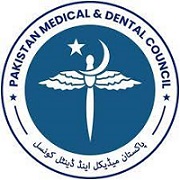PAIN SCORE IN NEONATES WHILE ADMINISTERING SURFACTANT VIA LISA METHOD WITH AND WITHOUT PREMEDICATION WITH OPIOID AND ATROPINE.
Abstract
Objective: To determine the Pain score in neonates while administering surfactant via LISA method with and without premedication with opioid and atropine.
Study Design: Quasi experimental study
Place and duration of Study: This quasi experimental study was conducted in neonatology unit of CMH Quetta from Feb 2024 to Dec 2024.
Methodology: Inclusion criteria was spontaneously breathing preterm neonates who were <35 weeks of gestation diagnosed as RDS within first 48 hours of life. Premedication with nalbuphine at 0.05mg/kg and atropine 20microg/kg was used in intervention group. The surfactant Curosurf (200 mg/kg body weight) was instilled intratracheally via the feeding tube. Pain score was assessed by NIPS (neonate infant pain score)
Results: Total 50 preterm neonates were included. Out of these 25 patients were given LISA with premedication and 25 were given LISA without any premedication. There were 26 (52%) male neonates and female neonates. The mean gestational age at birth was 30.68 + 3.67 weeks. Mean pain score in group A was 2.90 + 2.09 before LISA and after medication it reduced to 2.04 + 1.64 (p value 0.001) while mean pain score in group B was 1.92 + 1.08 which increased to 3.00 + 1.61 after LISA.
Conclusion: Nalbuphine and atropine in low dose is effective in managing pain and discomfort during LISA in pre term neonates with less post procedural complications.





